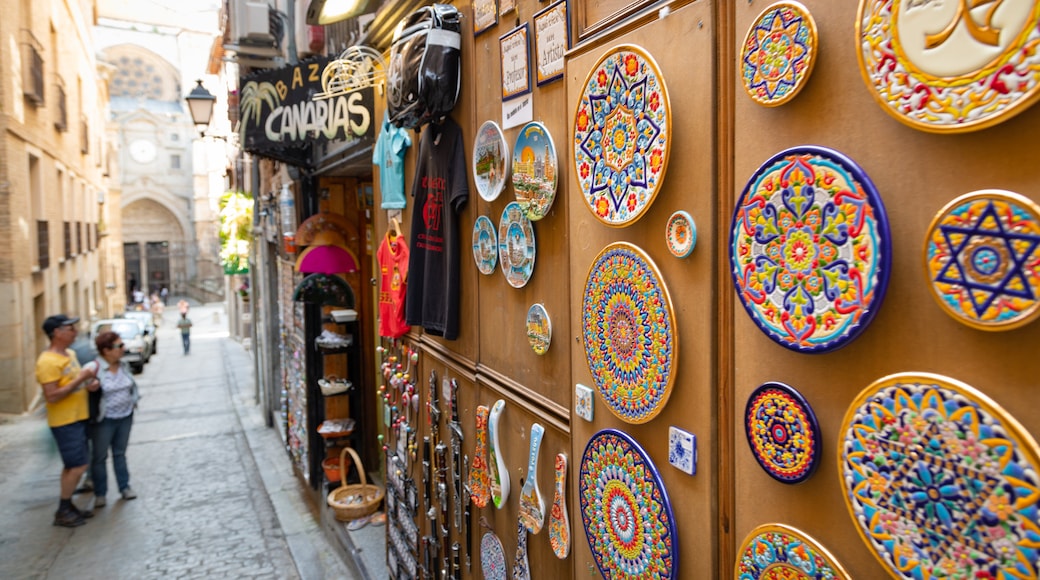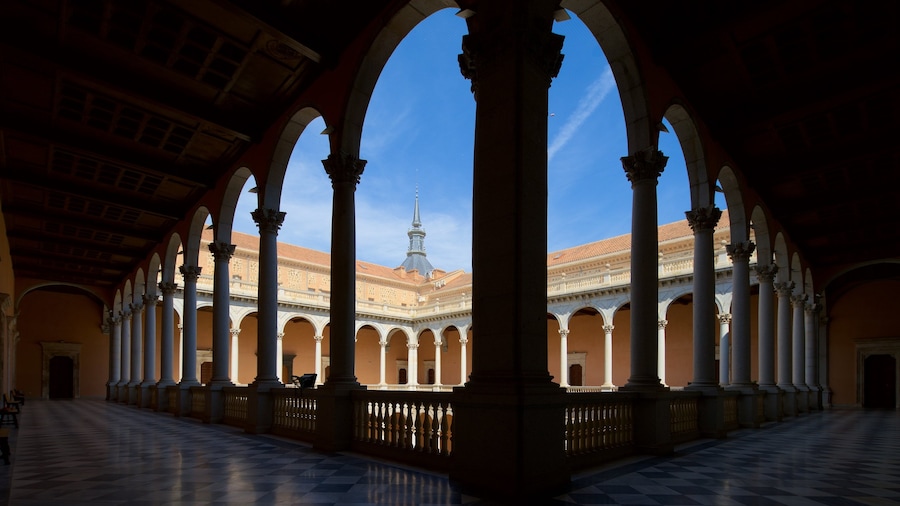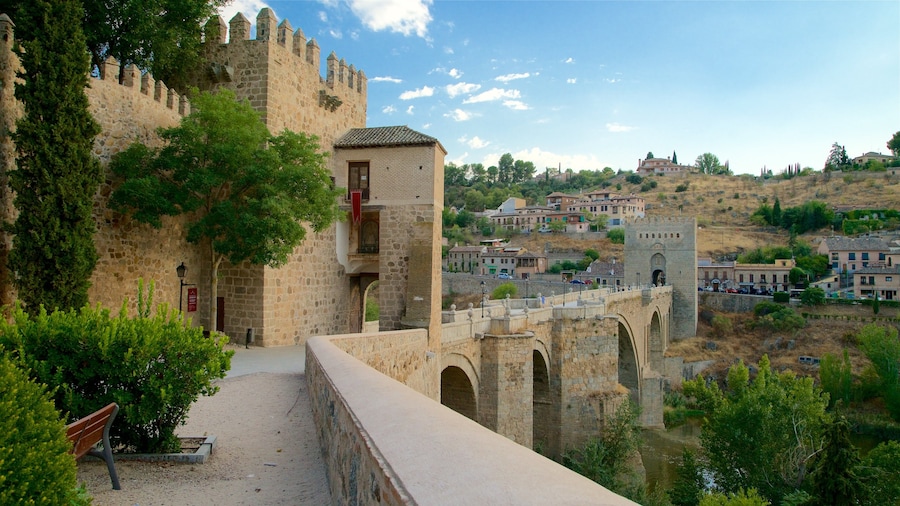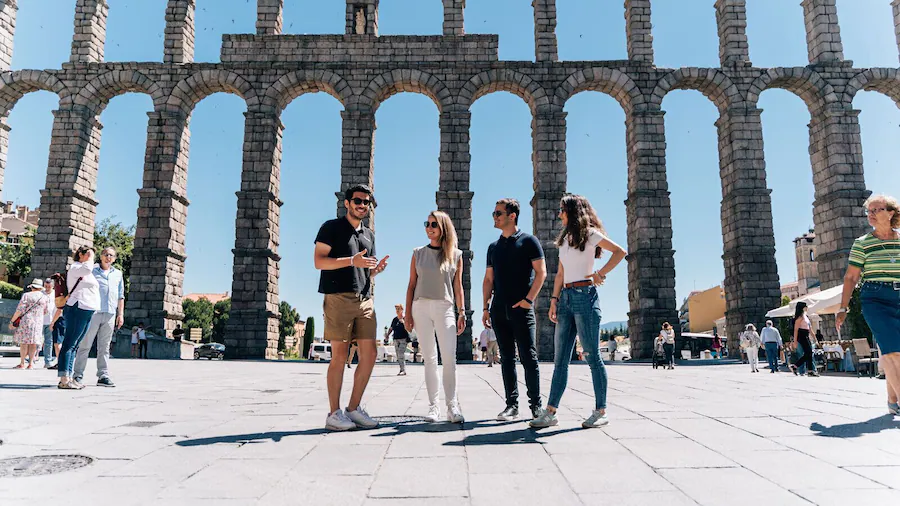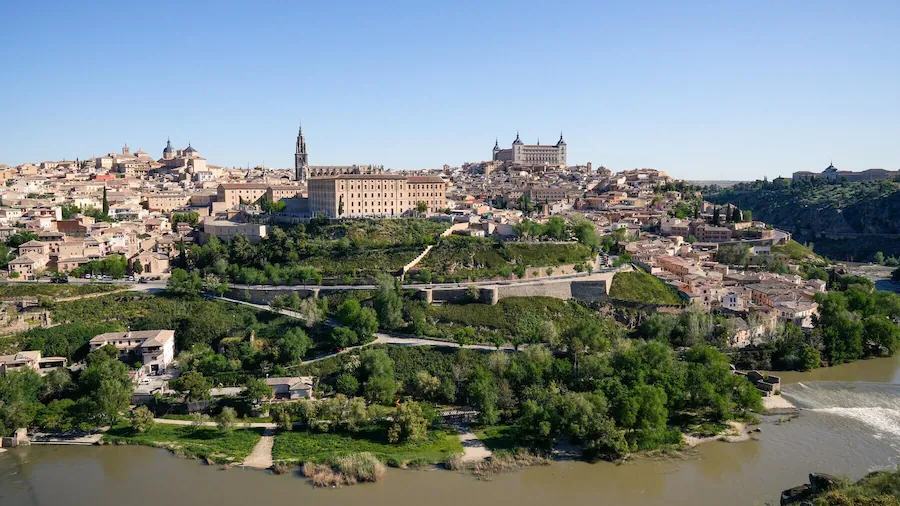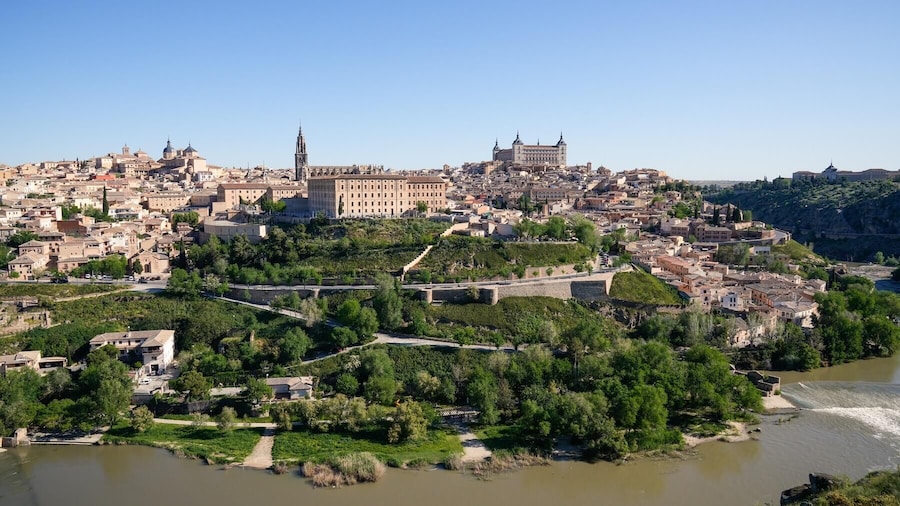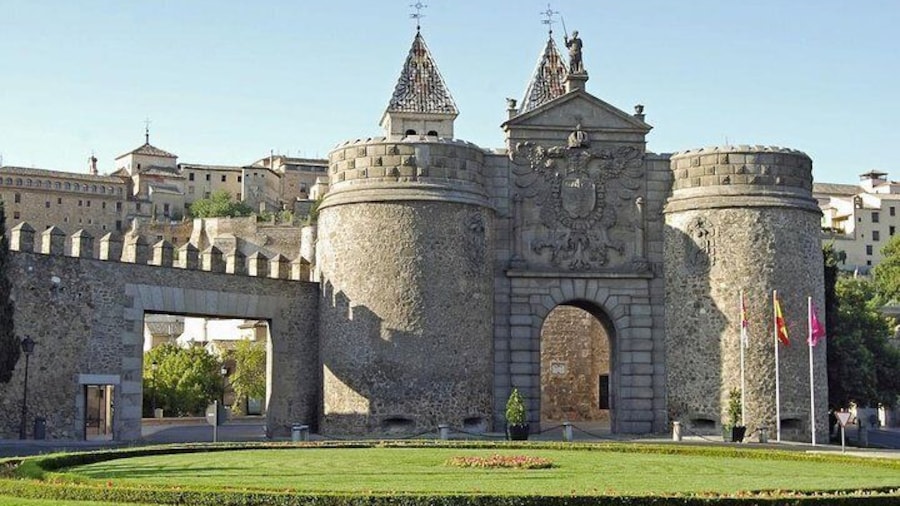Some of Europe’s oldest synagogues and a range of fascinating museums and palaces have been preserved in this Jewish neighborhood.
Intriguing markets, historic synagogues and public baths make up the gated Jewish Quarter in central Toledo. Many of the city’s Jewish people lived in this district during the Middle Ages, generally existing in peace with neighboring Muslim and Christian communities. Embark on a guided tour of the area to learn about their medieval customs and traditions.
Wander along the narrow cobbled streets and consider how Jewish families moved here to avoid persecution. One of the most insightful glimpses into the quarter’s past is provided by the Sephardic Museum, which lies in the historic building of the Samuel ha-Leví Synagogue. This 14th-century structure is also known as the Synagogue of El Tránsito. Marvel at its Mudejar ceiling design and richly carved stucco exterior.
Beside the temple stands the 16th-century building of the El Greco Museum, which holds a range of paintings by its namesake artist, whose religious practice as Jewish or Christian isn’t certain.
Walk north for several minutes to the 12th-century Synagogue of Saint Mary the White, which is considered among the oldest Jewish temples in Europe. Islamic architects built the synagogue for the Jewish people under the reign of the Christian Kingdom of Castile, which is evidence of the peace between the three faiths here. It has transitioned from synagogue to church to public monument.
At the eastern end of the neighborhood, find the Museum Taller del Moro. Enter the 14th-century palace containing the museum to study the selection of medieval arts and crafts and azulejo tiles.
The neighborhood is on the western side of Toledo’s historic center. Ride a bus to one of the stops overlooking the Tagus River and the Puente San Martín. Explore the adjacent city center for other treasures such as the Iglesia de Santo Tomé, the Iglesia del Salvador and the Plaza Virgen de Gracia.
The Jewish Quarter is a preserved hub of Mudejar ceramics and architecture and a window into the lives of the Jewish people who resided here historically.

